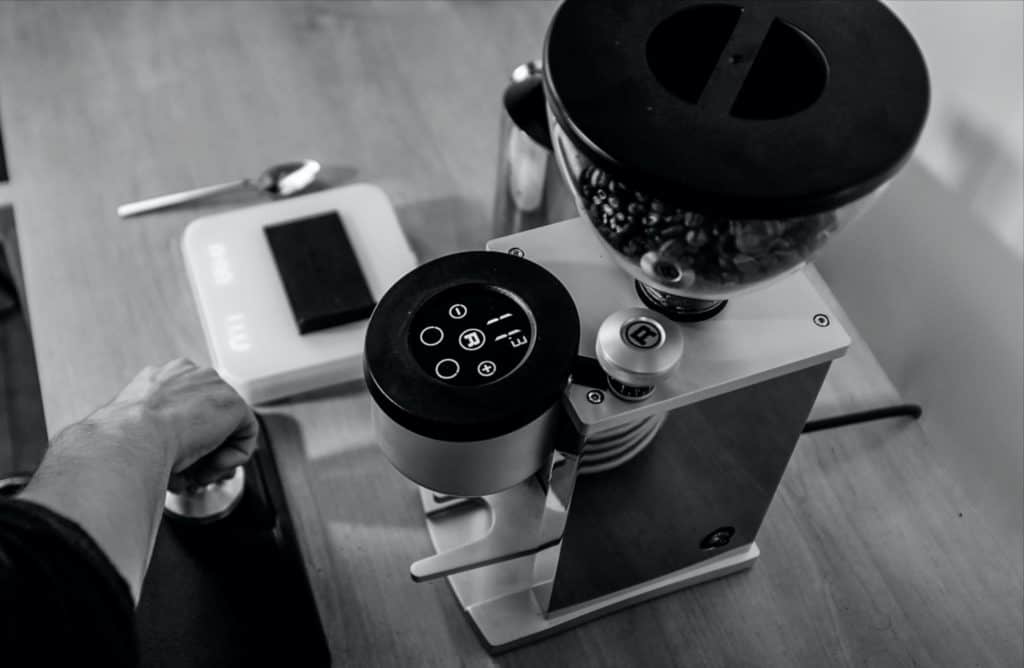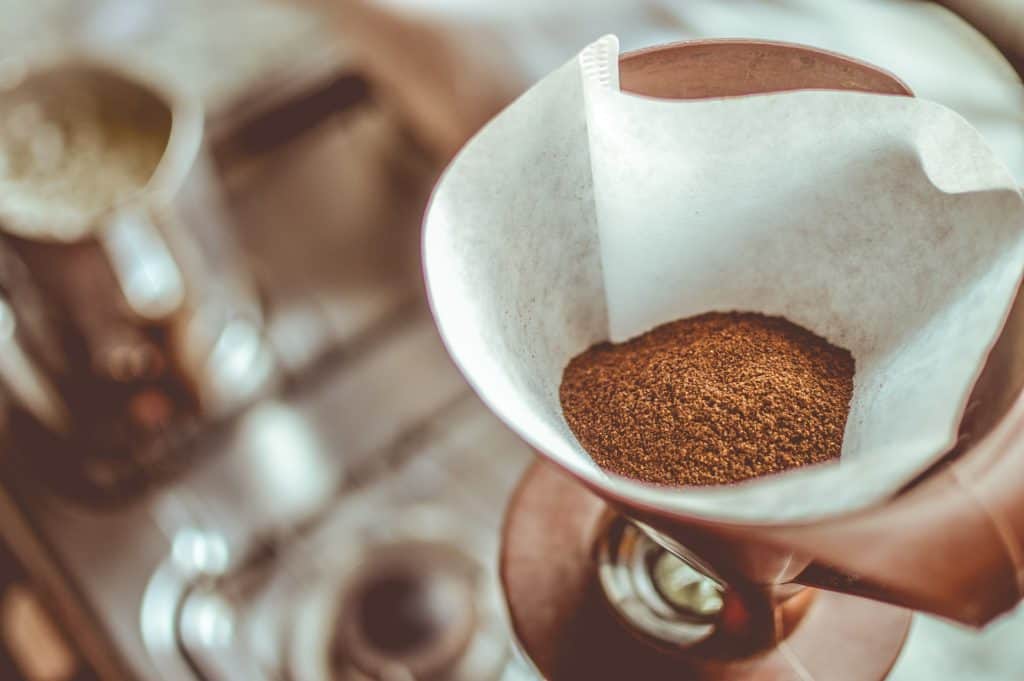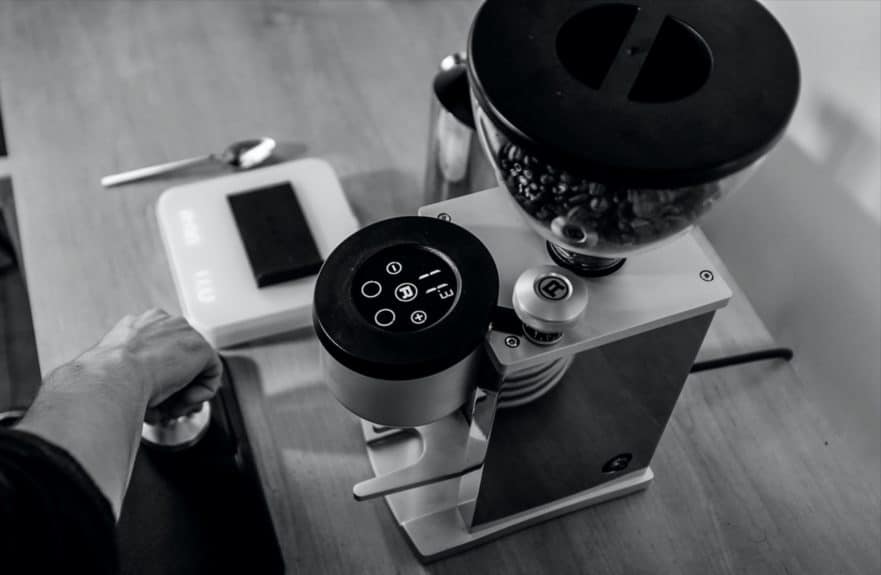
If you’re serious about coffee, you know a good grinder is the backbone of a great brew. It’s not just about grinding beans—it’s about unlocking flavor, consistency, and control. When choosing a grinder for your home setup, you’ll likely face the choice between flat burr and conical burr grinders. Both are top-tier compared to blade grinders, but they differ in ways that can impact your coffee.
Let’s break down the differences in build, grind quality, noise, heat, settings, cost, and more to help you pick the right one.
The Basics: What Are Burr Grinders?
Burr grinders use two abrasive surfaces, called burrs, to crush coffee beans into uniform particles, delivering far better results than blade grinders that chop inconsistently. The two main types are flat burr and conical burr grinders. Flat burrs are two parallel, toothed disks that grind beans as they pass through. Conical burrs consist of a cone-shaped burr nested inside a hollow ring, crushing beans in an angled gap. Both offer precise grinds, but their designs lead to distinct outcomes for different brewing styles.
How Burr Grinders Work
Flat burr grinders have two horizontal disks with textured surfaces that spin against each other. You adjust the gap between them to control grind size, from coarse for French press to fine for espresso. Beans are ground as they pass through the center and collected below. Conical burr grinders work similarly but use a cone-shaped burr rotating inside a conical ring. Beans are funneled vertically through the angled gap, aided by gravity, which makes conical burrs efficient and less prone to clogging.
Key Differences: Flat vs. Conical Burr Grinders

Here’s how flat and conical burr grinders compare across key factors:
1. The Build
Flat burr grinders feature two parallel disks in a circular chamber. You adjust grind size by changing the distance between the burrs, often with a collar or screw mechanism. The horizontal setup is precise but can be trickier to clean. Conical burr grinders use a cone-shaped burr inside a ring, with beans funneled vertically. This design is more compact, easier to maintain, and less likely to clog, thanks to gravity assisting the flow.
2. Type of Brewing
Both grinder types can produce a full range of grind sizes, but they’re optimized for different methods. Flat burr grinders excel at consistent coarse grinds, making them ideal for pour-over, drip, and French press. Their uniform particles enhance clarity and balance in these brews. Conical burr grinders are often preferred for espresso and Turkish coffee, where their ability to grind ultra-fine with precision shines. They also work well for siphon coffee’s delicate extraction. High-end models of either type can handle most methods, but flat burrs lean toward filter coffee, while conical burrs favor espresso.
3. Grind Distribution
Flat burr grinders produce a unimodal distribution, meaning most particles are roughly the same size. This uniformity is perfect for pour-over or drip, where even extraction yields a clean, balanced cup. Conical burr grinders often create a bimodal distribution, with a mix of finer and coarser particles. This mix can form a denser coffee bed, slowing water flow and boosting extraction, which adds body and intensity to espresso or Turkish coffee. Neither is better—it depends on your brewing style.
4. Noise Level
Noise matters, especially if you’re grinding early in the morning. Conical burr grinders are generally quieter, operating at 70-80 decibels (like a vacuum cleaner), thanks to their lower RPM and vertical design. Flat burr grinders, running at higher RPM, hit 80-90 decibels, which can be disruptive. Models like the Baratza Virtuoso (conical) are notably quiet, while flat burr grinders like the Eureka Mignon are louder. Noise reflects motor quality, but high-end grinders of either type minimize vibration and wear.
5. Ventilation and Heat
Flat burr grinders generate more heat due to higher RPM (1,500-2,000), as their parallel disks need more power. Conical burrs, running at 400-1,000 RPM, produce less heat, giving them an edge for heat retention. For home use, though, heat is rarely a concern—most grinders don’t run long enough to overheat or scorch beans. Modern models have adequate ventilation, but conical burrs are slightly better for frequent grinding sessions.
6. Settings and Adjustability
Adjustability depends on the grinder’s make and model, not just burr type. High-end flat burr grinders, like the Mahlkönig EK43, offer precise micro-adjustments for a wide range of grind sizes. Conical burr grinders, like the Baratza Sette 270, often feature stepless adjustments that are intuitive for beginners. Both can be versatile, but conical grinders are marketed as more user-friendly, while flat burrs may need more tweaking to dial in espresso.
7. Cost and Durability
Flat burr grinders are pricier, costing $200-$1,000 for quality models like the Fellow Ode, due to their larger, precision-engineered burrs. Conical burr grinders are more affordable, ranging from $100-$500 for models like the Breville Smart Grinder Pro. Conical burrs are also more durable, as their angled design distributes force evenly, reducing wear. Flat burrs can dull faster under heavy use, but both last years with proper care at home.
Which Should You Choose?
Here’s a quick guide to help you decide:
- Choose a Flat Burr Grinder If: You love pour-over, drip, or French press and want consistent, uniform grinds for clean flavors. You’re okay with a higher price and slightly louder operation. Try the Fellow Ode Brew Grinder ($299).
- Choose a Conical Burr Grinder If: You’re into espresso or Turkish coffee, where bimodal distribution adds body. They’re quieter, often cheaper, and easier to maintain, making them great for beginners or mixed brewing. Check out the Baratza Encore ($149).
Here’s a comparison chart:
| Feature | Flat Burr Grinders | Conical Burr Grinders |
|---|---|---|
| Grind Distribution | Unimodal (uniform particles) | Bimodal (mix of fine/coarse) |
| Best For | Pour-over, drip, French press | Espresso, Turkish, siphon |
| Noise Level | Louder (80-90 dB) | Quieter (70-80 dB) |
| Heat Generation | Higher (higher RPM) | Lower (lower RPM) |
| Settings | Precise but model-dependent | Often beginner-friendly, stepless |
| Cost | $200-$1,000 | $100-$500 |
| Durability | Dulls faster under heavy use | Longer-lasting due to angled design |
| Maintenance | Slightly harder to clean | Easier to clean and assemble |
Final Thoughts
Choosing between flat and conical burr grinders depends on your brewing style, budget, and preferences. Flat burr grinders deliver unmatched consistency for pour-over and drip but come with a higher price and noise level. Conical burr grinders are versatile, budget-friendly, and quieter, making them ideal for espresso or mixed brewing. Both will elevate your coffee game, so visit a local coffee shop to see them in action or read reviews for models like the Baratza Encore or Fellow Ode to find your perfect match.
To get an idea on what these types of coffee grinders cost, features and size you can check out these links to Amazon to get started:
List of Best Selling Burr Grinders on Amazon
List of Best Selling Conical Grinders on Amazon

